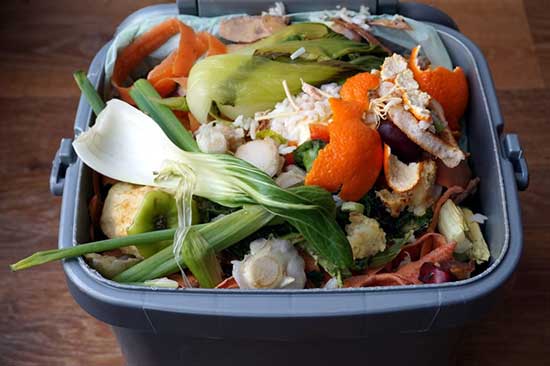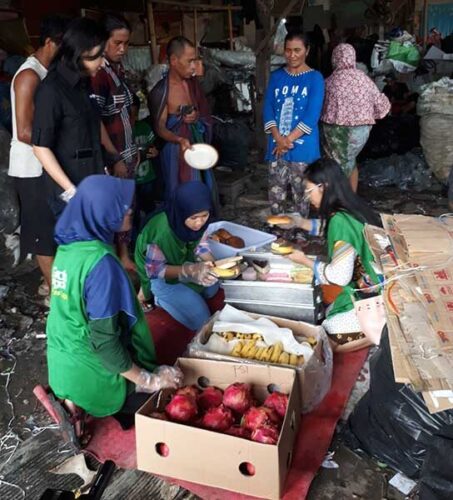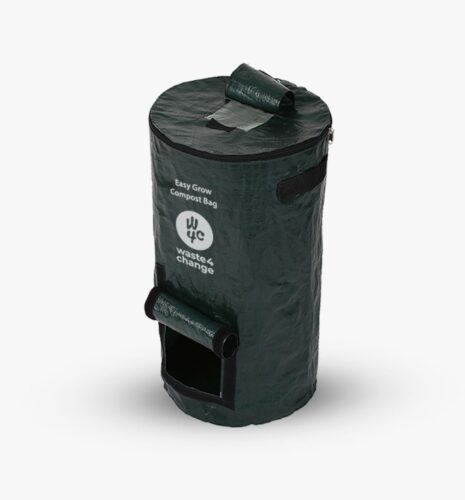The Difference between Food Loss vs Food Waste and How to Avoid It
Read the Indonesian version here.
Food Loss vs Food Waste
Surely we have heard many about the issue. However, we haven’t heard much about the term ‘food loss’. Apparently, food waste and food loss has a slightly different meaning.

In The State of Food Agriculture 2019, Food and Agriculture Organization of the United Nations (FAO UN) stated that food loss is the decrease in the quantity or quality of food resulting from decisions and actions by food suppliers in the chain, excluding retailers, food service providers and consumers.
Food loss is typically driven by infrastructure limitations, climate and environmental factors as well as quality, aesthetic or safety standards. Food loss most often occurs at the production, post-harvest, and processing stages of the food chain.
Whilst food waste occurs at the end of the food chain. Food waste is the food which was originally produced for human consumption but then was discarded or was not consumed by humans.
This includes food that was spoiled prior to disposal and food that was still edible when thrown away. Food waste typically occurs at the retail and consumer level and is driven by decisions made by consumers and businesses who consider quality, aesthetics and/or safety standards.
Food waste as defined here is more directly linked with consumer behaviour. Such as expired packaged or canned food from retail wholesale, unfinished meals, or undercooked products.
Why Is This Alarming?
We would remind you again about the catastrophic waste avalanche of Leuwigajah Landfill, which took place in Cimahi, February 21st 2005. The mountainous dumpsite exploded after two days of heavy rainfalls, and killed 143 people.
Ever since then, February 21st is commemorated as Indonesian Waste Awareness Day. The damp combination of organic and inorganic waste resulted in methane gas which caused the avalanche. Had we sorted out our waste before we threw them away, many lives would be saved.



Food that ends up in the landfill not only comes from domestic activities. The source also came from caterers, home industries, restaurants, hotels, school or college pantries. Your leftovers could be the vector of anthropogenic greenhouse gas.
According to the Food Sustainability Index, 2017, every single person in Indonesia is responsible for 300 kg of waste per year. If this amount of waste is multiplied with the total population, the number amounts to 87 million tonnes. Because of this, Indonesia is the largest food waste contributor after Saudi Arabia.
Seeing many no-plastic campaigns engaged by retailers, shifting from plastic bags to reusable bags, it’s safe to say that we’ve realized the danger of plastics. However, we don’t see that many campaigns regarding food waste. Even though more than 60% waste in landfills consists of food waste. (also read important facts about food waste that you need to know)
We don’t realize how often we waste our food and how bad the impact is on food security, the environment and climate crisis. Reducing our food waste could be beneficial for the place we live in, now and the future.
How to Reduce Them?
If it’s still hard for you to avoid producing food waste, you can always reduce them. Here are three of many ways to reduce food waste.
- Shopping groceries adequately
One of the easiest things to reduce food waste is to finish what’s on the plate. Measure the portion of your meal to avoid getting full and leaving leftovers. You can also do food prep and make a shopping list to reduce wasted food.
- Food donating
We often hear people donating blood. But have you ever donated your food?



Donating whole food to food banks or people in need can avoid food from ending up in landfills. Donation could be in various kinds of food: whole meals, bread, dairy products, fruits and veggies.
Any food that is still edible and not yet spoiled would be distributed to food banks, emergency pantries or commune kitchens. Retailers usually donate their nearly-expired goods to food banks. (also read more about one of food banks in Indonesia here )
- Composting



Composting your leftover and spoiled food could be the initial solution of organic waste in domestic activities. Inedible kitchen scraps such as fruit peels and egg shells could be used as a fertilizer for our plants at home.
Although, not every organic waste could be composted. Materials like coconut shell, chicken or fish bone, meat or dairy products are not recommended to be composted. (also read how to do home composting)



Nowadays, the tutorial to make a simple composter isn’t hard to find. The tools and materials are fairly accessible.
Waste4Change also provides a composting bag to help you learn composting at home. The package includes user instructions, so that you can easily handle your organic waste and contribute in reducing landfill waste.
References:
https://www.usda.gov/foodlossandwaste/why
https://guelphfoodwaste.com/2018/08/01/food-loss-vs-waste-whats-the-difference/
https://www.epa.gov/sustainable-management-food/how-prevent-wasted-food-through-source-reduction
https://www.un.org/en/observances/end-food-waste-day
http://www.fao.org/publications/sofa/en/; 2019. The State of Food and Agriculture; Food and Agriculture of United Nations



